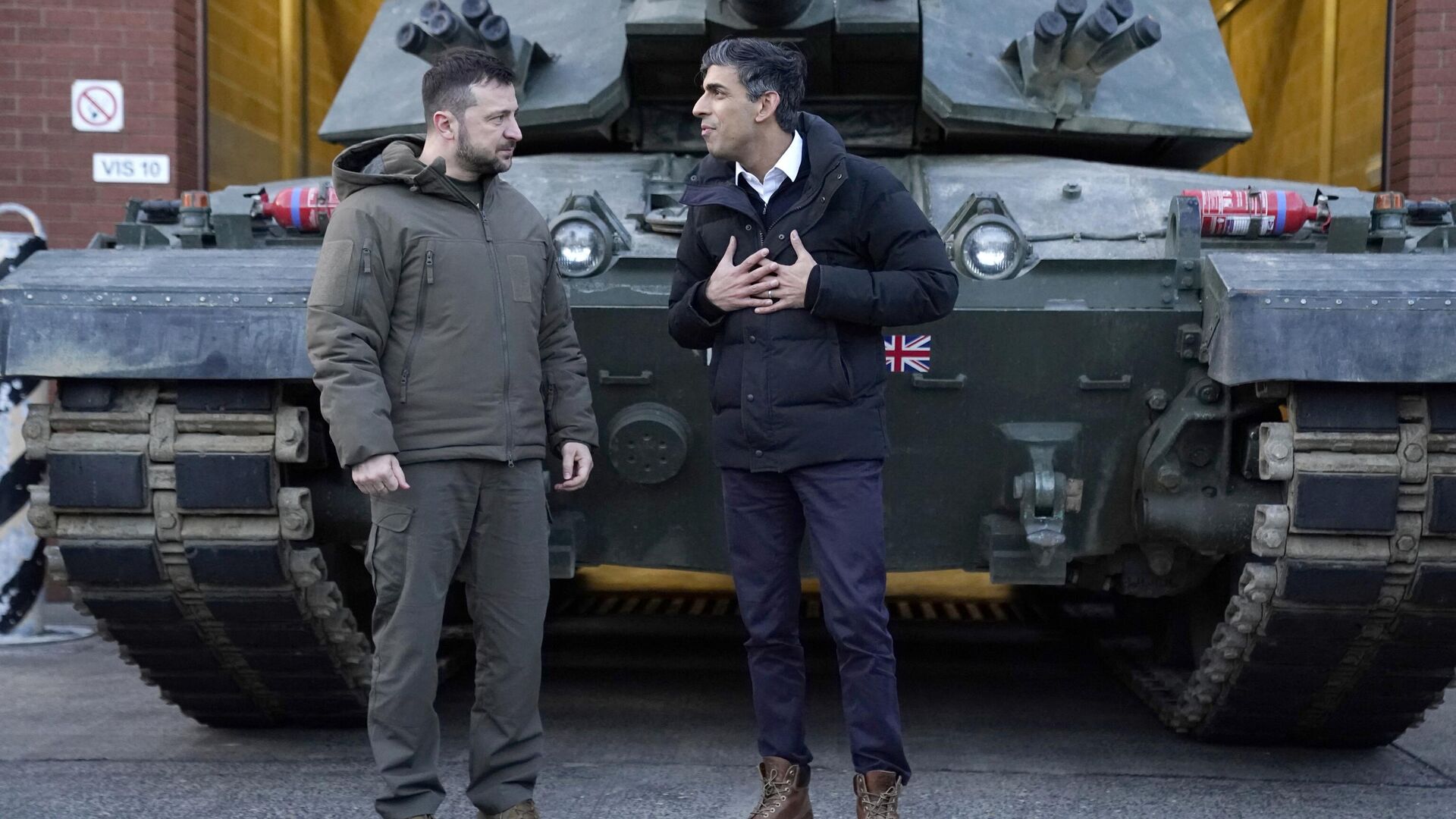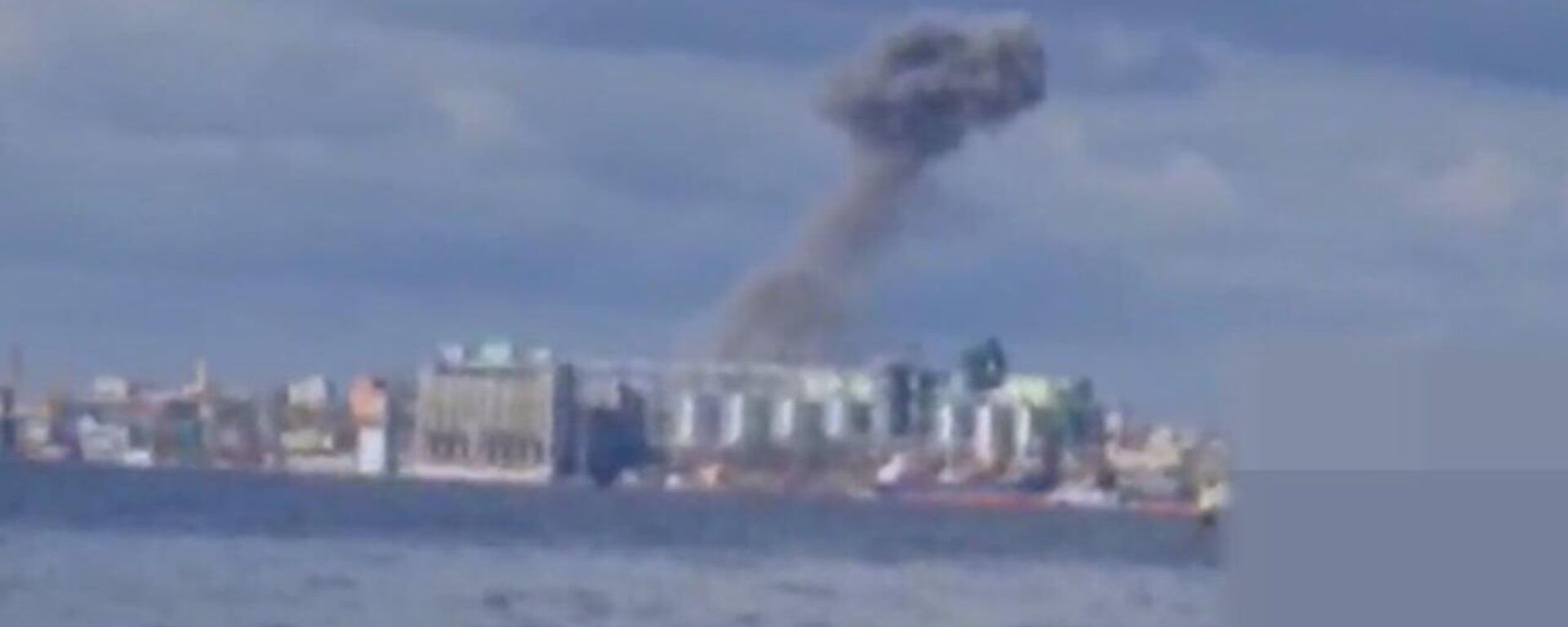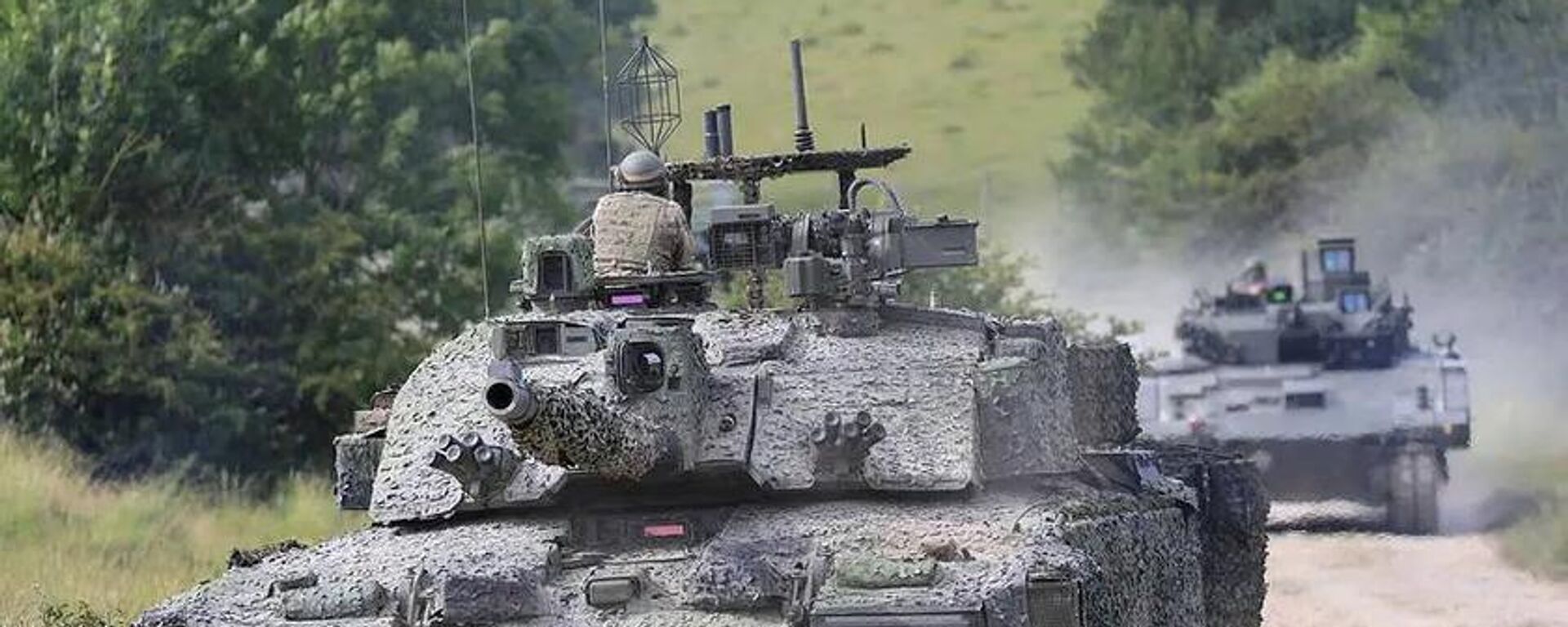https://sputnikglobe.com/20240329/ukraine-stuck-with-stripped-down-monkey-model-challenger-2s-1117643196.html
Ukraine Stuck With Stripped Down Monkey Model Challenger 2s
Ukraine Stuck With Stripped Down Monkey Model Challenger 2s
Sputnik International
Russia’s military has been making good on President Putin’s promises to “crack” Western weapons sent to Ukraine “like nuts,” with dozens of Leopard 2, Challenger 2 and M1 Abrams tanks destroyed or damaged over the past year. Humiliated, Western observers have done their best to explain the underwhelming performance of their sophisticated equipment.
2024-03-29T18:17+0000
2024-03-29T18:17+0000
2024-03-30T13:44+0000
military
david axe
ukraine
russia
forbes
challenger 2
m1 abrams tank
tank
https://cdn1.img.sputnikglobe.com/img/07e8/03/1d/1117642703_0:160:3072:1888_1920x0_80_0_0_24cae6653dbb5d5b62a4fa15877e3d01.jpg
The Challenger 2 main battle tanks sent to Ukraine by Britain last year never got the add-on hull and lower frontal plate armor the British Army uses when deploying abroad. They’re also slow, are easily bogged down in Ukraine’s soft soil, and have a problematic 120-mm rifled main gun that wears out after firing 500 rounds. That’s according to a new analysis by Forbes defense observer David Axe.The 71-ton British behemoth just “isn’t good for Ukraine,” the observer writes, suggesting “there are reasons to believe London offered up” its 14 Challenger 2s to Kiev early last year “merely to encourage other NATO countries to donate their own, better tanks” for the proxy war against Russia.Axe’s commentary marks a u-turn from what he was saying a year ago, before Ukraine launched its disastrous summer counteroffensive. In May 2023, Forbes published a piece by Axe titled “Ukraine’s Challenger 2 Tanks Can Plow Right Through Russian Fortifications,” in which the analyst predicted that dozer blade-equipped Challenger 2s would be able to literally “scoop up concrete ‘dragon’s teeth’ tank obstacles” deployed by Russia en masse during Ukrainian breakthroughs.But Ukraine’s Challenger 2s never got the chance to tear through Russian dragon’s teeth defenses, with the frontline barely budging over six months of brutal fighting, and the Russian military estimating Ukrainian losses of over 125,000 troops between early June and late November.Axe’s latest piece on the Challenger 2 is the second time the analyst has offered an explanation for the rapid rate at which Western main battle tanks are being lost in Ukraine. In early March, he chalked Abrams losses down to Ukrainian commanders’ tactics, specifically counterattacks being carried out without sufficient artillery support, and “Russia-friendly Republicans” in Congress holding off new aid Kiev since the end of last year.Like the Challenger 2s, the Abrams Ukraine got lacked equipment the American Army gets, including the tanks’ vaunted depleted uranium armor, plus anti-tank missile active protection and anti-drone warning stations.Some Russian defense observers have generously labeled the M1s sent to Ukraine a “lite version” of the tank. But Sputnik decided to call a spade a spade and labeled it a monkey model – a throwback to the term used during the Cold War by US-based observers to derisively refer to Soviet military hardware exported abroad to friendly countries.Like the American Abrams, it turns out the British Challenger 2s Ukraine got are also “lite” or “monkey model” variants of the tanks. This, Western military analysts may hope, can explain why as few as half of the heavy MBTs handed over to Kiev last year are currently in a state to be used for combat operations.
https://sputnikglobe.com/20240317/russian-forces-hit-ukrainian-tank-factory-repairing-german-leopards---source-1117389216.html
https://sputnikglobe.com/20240311/only-7-out-of-14-challenger-tanks-handed-over-by-uk-to-ukraine-remain-in-service---report-1117248679.html
ukraine
russia
Sputnik International
feedback@sputniknews.com
+74956456601
MIA „Rossiya Segodnya“
2024
News
en_EN
Sputnik International
feedback@sputniknews.com
+74956456601
MIA „Rossiya Segodnya“
Sputnik International
feedback@sputniknews.com
+74956456601
MIA „Rossiya Segodnya“
why are challenger 2s performing so poorly in ukraine, is challenger 2 wrong tank for ukraine
why are challenger 2s performing so poorly in ukraine, is challenger 2 wrong tank for ukraine
Ukraine Stuck With Stripped Down Monkey Model Challenger 2s
18:17 GMT 29.03.2024 (Updated: 13:44 GMT 30.03.2024) Russia’s military has been making good on President Putin’s promises to “crack” Western weapons sent to Ukraine “like nuts,” with dozens of Leopard 2, Challenger 2 and M1 Abrams tanks destroyed or damaged over the past year. Humiliated, Western observers have done their best to explain the underwhelming performance of their sophisticated equipment.
The Challenger 2 main battle tanks sent to Ukraine by Britain last year never got the add-on hull and lower frontal plate armor the British Army uses when deploying abroad. They’re also slow, are easily bogged down in Ukraine’s soft soil, and have a problematic 120-mm rifled main gun that wears out after firing 500 rounds. That’s according to a new analysis by Forbes defense observer David Axe.
The 71-ton British behemoth just “isn’t good for Ukraine,” the observer
writes, suggesting “there are reasons to believe London offered up” its 14 Challenger 2s to Kiev early last year “merely to encourage other NATO countries to donate their own, better tanks” for the proxy war against Russia.
Axe’s commentary marks a u-turn from what he was saying a year ago, before Ukraine launched its disastrous summer counteroffensive. In May 2023, Forbes published a piece by Axe titled “Ukraine’s Challenger 2 Tanks Can Plow Right Through Russian Fortifications,” in which the analyst
predicted that dozer blade-equipped Challenger 2s would be able to literally “scoop up concrete ‘dragon’s teeth’ tank obstacles” deployed by Russia en masse during Ukrainian breakthroughs.
“As a bonus, the Challenger’s steerable dozer blade, which the crew controls from inside the vehicle, doesn’t significantly impact the tank’s ability to move and fight,” Axe wrote at the time. “Every minute will matter. After breaching the minefields, trenches, berms and rows of dragon’s teeth, the Ukrainians must shove as many battalions as possible through the breach before the Russian reinforcements arrive,” he added.
But Ukraine’s Challenger 2s never got the chance to tear through Russian dragon’s teeth defenses, with the frontline barely budging over six months of brutal fighting, and the Russian military estimating Ukrainian losses of over 125,000 troops between early June and late November.
Axe’s latest piece on the Challenger 2 is the second time the analyst has offered an explanation for the rapid rate at which Western main battle tanks are being lost in Ukraine. In early March, he chalked
Abrams losses down to Ukrainian commanders’ tactics, specifically counterattacks being carried out without sufficient artillery support, and “Russia-friendly Republicans” in Congress holding off new aid Kiev since the end of last year.
Like the Challenger 2s, the Abrams Ukraine got lacked equipment the American Army gets, including the tanks’ vaunted depleted uranium armor, plus anti-tank missile active protection and anti-drone warning stations.
Some Russian defense observers have generously labeled the M1s sent to Ukraine a
“lite version” of the tank. But Sputnik decided to call a spade a spade and labeled it a monkey model – a throwback to the term used during the Cold War by US-based observers to derisively refer to Soviet military hardware exported abroad to friendly countries.
Like the American Abrams, it turns out the British Challenger 2s Ukraine got are also “lite” or “monkey model” variants of the tanks. This, Western military analysts may hope, can explain why as few as half of the heavy MBTs handed over to Kiev last year are currently in a state to be used for combat operations.




